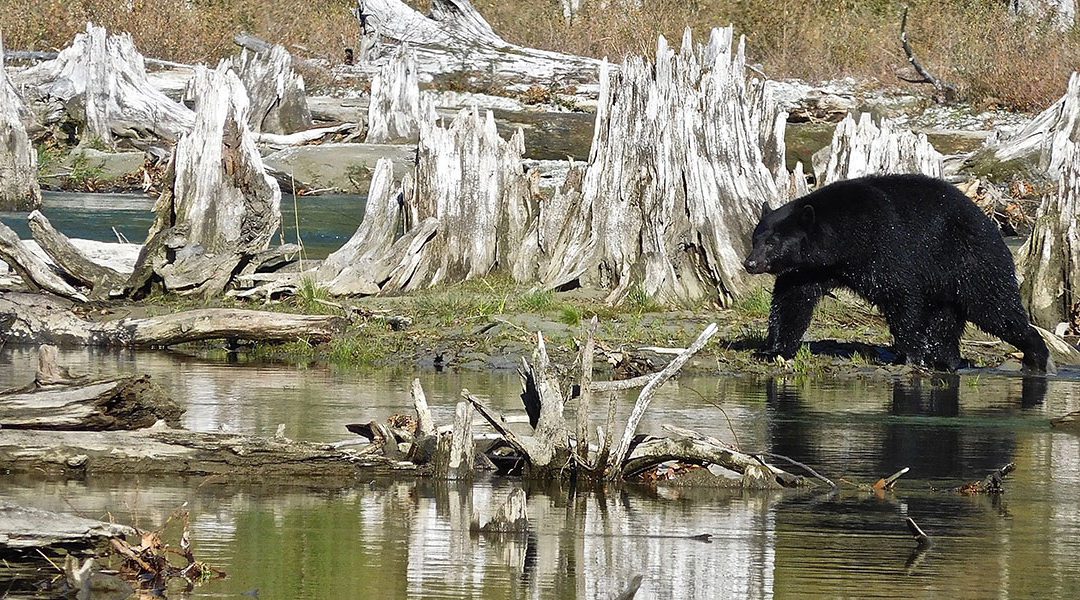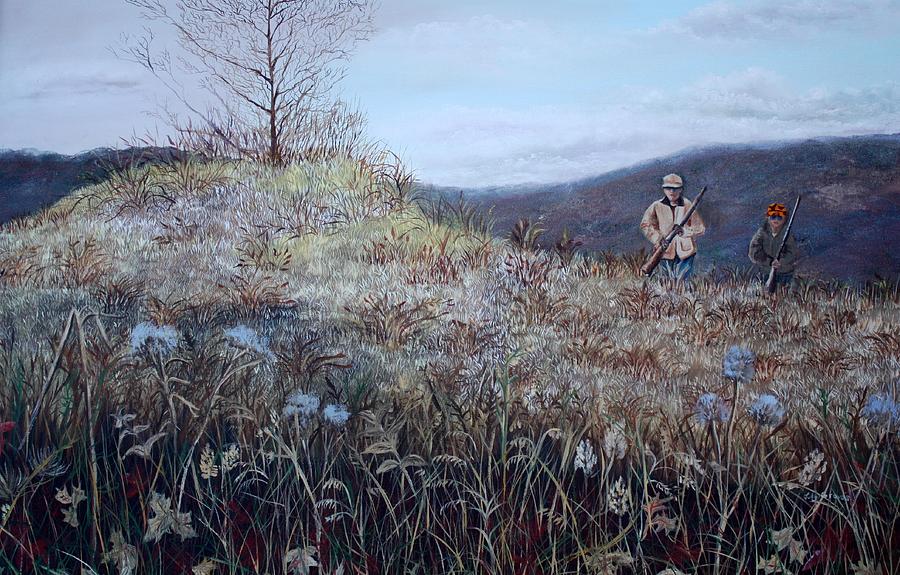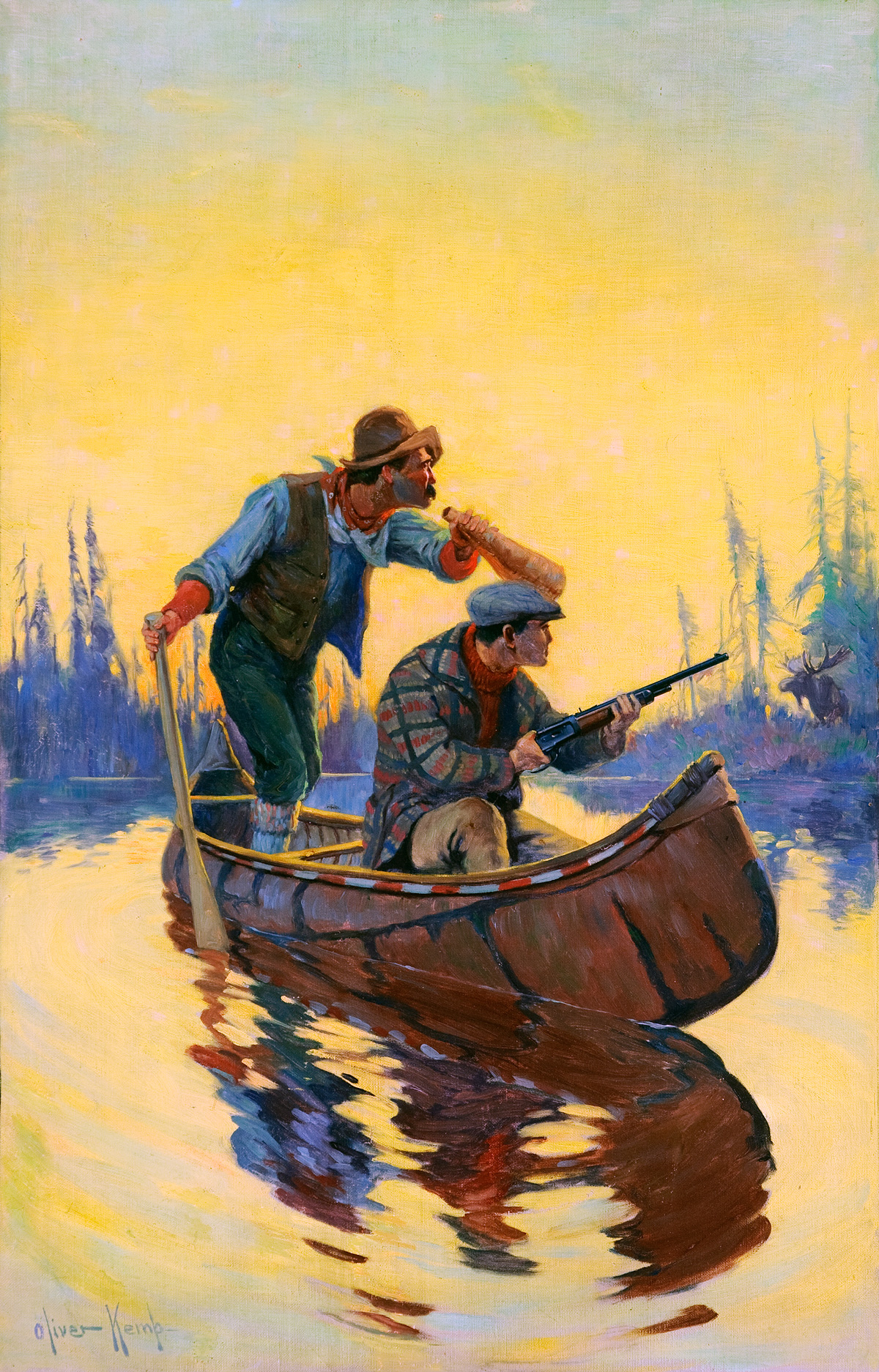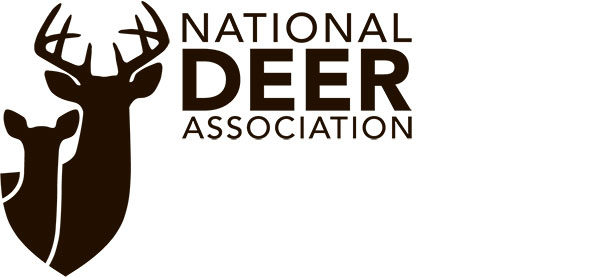A: I look forward to seeing you in Dallas (January 9th thru 12th, 2020), my favorite hunter/conservationist gathering in the world! While there you will have an opportunity to visit with several outfitters who hunt black bears on Vancouver. I have personally hunted Vancouver Island several times, most recently with Sean Lingl who will be there. I have also hunted Vancouver with Dave Fyfe and Jim Shockey. All were fun and successful hunts. Black bear there tend to be big of body and are considered a separate subspecies related to the ancient cave bear.
British Columbia does not allow baiting for bears. Hunts in that province are spot and stalk, which, to me, is the most interesting and fun way to hunt black bears.
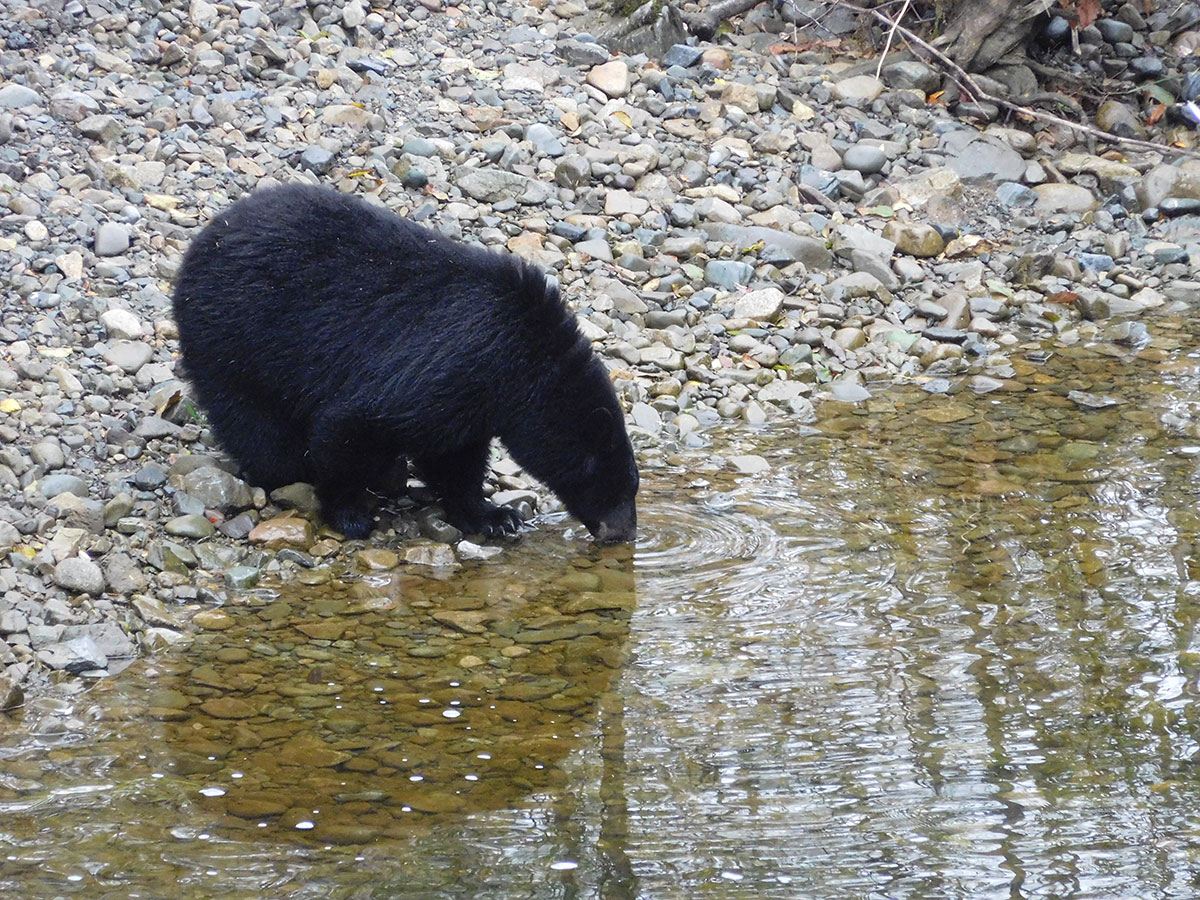
Before discussing travel and permits, let us address firearms. I shot my first black bear in New Mexico with a .270 Win. many years ago sitting on a remote waterhole. Since that time, I have taken them with .50-caliber muzzleloaders, 12-gauge shotguns with slugs, .44 Mag. and .450 Marlin handguns (handguns not allowed in Canada), .257 Roberts, .280 Remington, 7×57, .30-30 Win., .308 Win., .30-’06 (numerous hunts), .300 Win. Mag., .375 H&H Mag., .375 Ruger, .450-400 NE 3” and .45-70. In most instances, those rifles were topped with a variable scope and I was shooting commercially available ammunition; during the past twenty years, Hornady.
My shots at spot and stalk bears averaged less than 50 yards; the most distant 150 yards and the closest, less than ten yards. By paying attention to the wind, moving slowly and deliberately, we were always able to get close in just about every instance.
Either of the two rifles you currently hunt with will work extremely well on black bear! Over the past few years I have become particularly enamored with hunting with single-shots, and specifically Ruger No. 1s. Your .45-70 loaded with a round such as the Hornady 325-grain FTX is capable of bringing down any black bear found in North America. With a little practice, a No. 1 can be reloaded quickly in case a second shot is needed. But if you feel more comfortable shooting your .30-’06 bolt action, then that is the one you should be using.
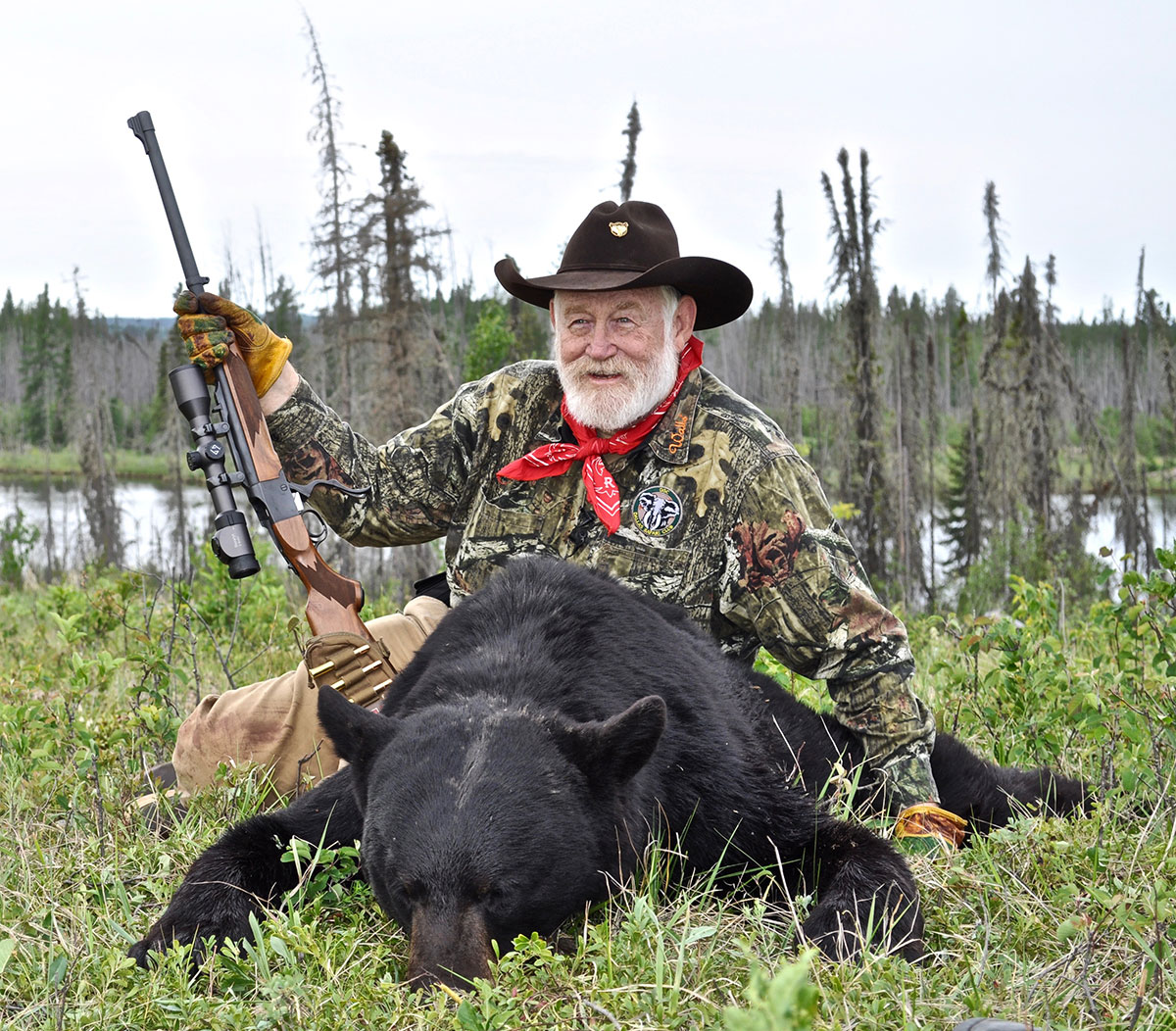
When I hunt bears, I sight in at 75 yards. That way I can hold dead-on out to 150 yards with most of the rifles I shoot and still be sighted in for close shots. Once I have my rifle shooting exactly where I want it to from the bench, I start shooting off of “sticks” not unlike those I carry when hunting in Africa. Carrying sticks when hunting spot and stalk bears, I know I will always have a solid rest.
Where to shoot bears? Black bear vitals, heart and lungs, tend to be a bit forward. Some guides suggest breaking down a bear’s shoulders, others suggest shooting through the vitals immediately behind the shoulder, about a third of the way up from the bottom of the chest. I try to hit them where my guide suggests. Even though I have shot several black bears, I always study a bear anatomy chart before hunting and, in so doing, also study where I would shoot depending upon the angle the bear presents.
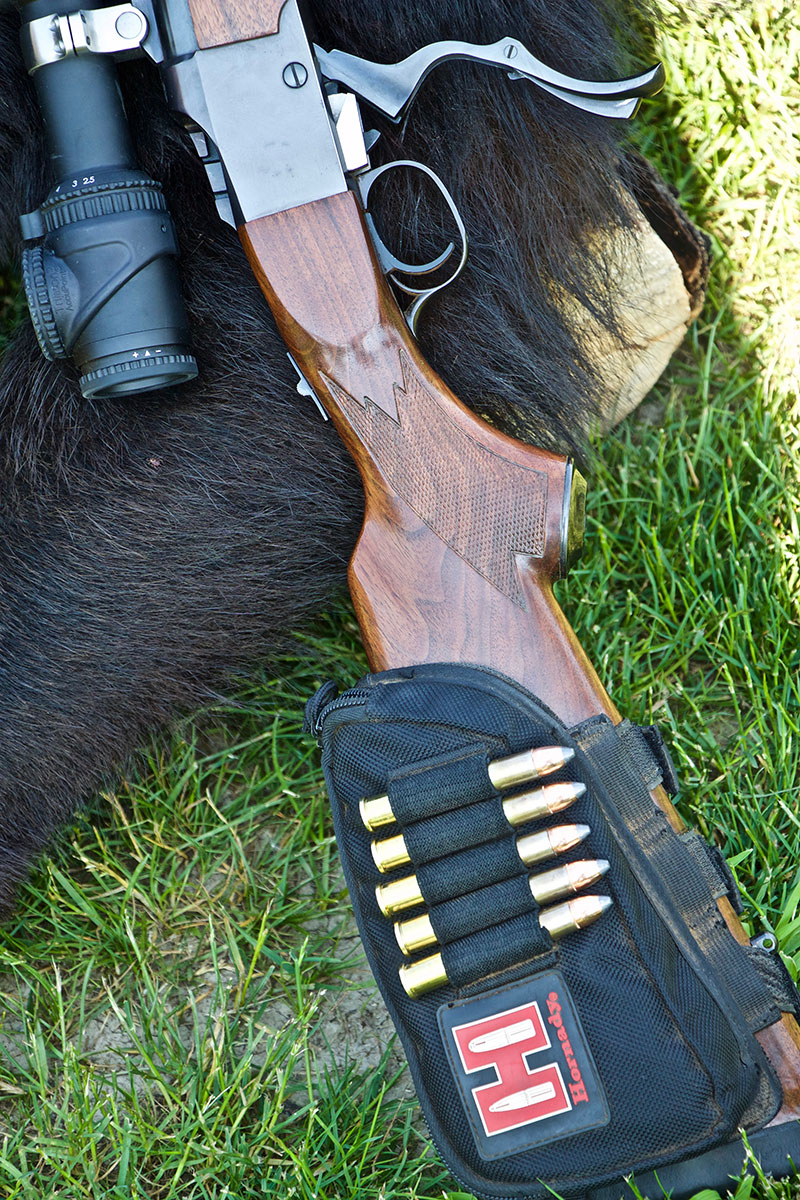 Regarding permits, if you travel out of country with a firearm, you will need a Form 4457, which is a proof of ownership, to bring your rifle back into the country. To do so, you will need to take your firearm to your nearest U.S. Customs office, located at your nearest international airport. Once done, I usually make four copies of the form. I keep one on person with me in my wallet, one I keep in a Ziplock bag in the cheek-rest pouch on my rifle, another I place in my U.S. Passport (which you will also need, if you do not already have one), the fourth I keep with my paperwork regarding travel schedules, hunting contracts and the like. I also make a copy of passport to keep with the paperwork.
Regarding permits, if you travel out of country with a firearm, you will need a Form 4457, which is a proof of ownership, to bring your rifle back into the country. To do so, you will need to take your firearm to your nearest U.S. Customs office, located at your nearest international airport. Once done, I usually make four copies of the form. I keep one on person with me in my wallet, one I keep in a Ziplock bag in the cheek-rest pouch on my rifle, another I place in my U.S. Passport (which you will also need, if you do not already have one), the fourth I keep with my paperwork regarding travel schedules, hunting contracts and the like. I also make a copy of passport to keep with the paperwork.
Upon entering Canada, you will need to declare your rifle to Canadian Customs. Canada requires three copies of its Non-Resident Firearm Declaration Form (Form CAFC909). These are available online, but also should be available through your outfitter and travel agent. Fill in all the information on the form, BUT, do not sign the form until you are told to do so by Canadian Customs. The cost for this permit in Canadian Customs is $25 Canadian, which is most easily paid by credit card.
If you do not already own one, you will need at lockable hard case. I usually use a two-gun case, even if I am taking only one gun. I put my firearm in a soft-case, which I will use while I am on the hunt, then place the cased rifle inside of the hard case. I use a pair of like-keyed locks to lock my gun case.
Most airlines require ammunition (you are allowed up to 11 pounds) be in its original commercial box, locked in a lockable hard-case (usually I use the same-keyed lock as my firearm case), which should be placed in your checked luggage (clothes bag). Both your firearm and ammo must be declared when checking in for your flight. Because you never know for certain how long it may take to have your firearm cleared by a TSA agent, I arrive at the airport at least three hours earlier than my scheduled flight.
Regarding flying to Canada, I book all my international flights through Travel with Guns, based out of San Antonio. TWG will also be at the DSC convention. Steve Turner and his crew of travel experts are, in my opinion, the best in the business. Among other things, they keep abreast of the latest gun laws and regulations and are a wealth of information when it comes to international travel for hunting.
Beyond what has been mentioned. Spend time looking at photos and possibly footage of black bear to learn how to distinguish a so-so bear from a true monster. Black bear can be tough to judge. Trust the judgment of your guide!

As a wildlife biologist, Larry Weishuhn established quality wildlife management programs on approximately 12,000,000 acres across North America with emphasis on habitat and animal populations. As a writer, he has served on staff on numerous publications in hunting, shooting and wildlife management and has long been involved with the highest quality outdoor television productions.
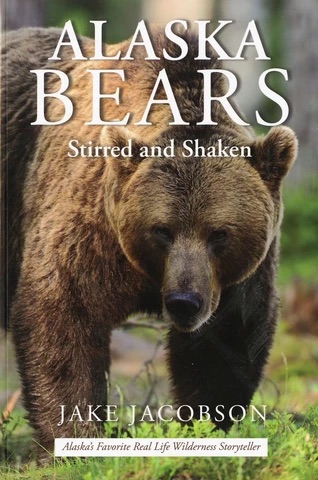
ALASKA BEARS: Stirred and Shaken is a collection of 24 stories describing Jake’s personal experience hunting and guiding for all the species of bears in Alaska. Bear biology, hunting techniques, cabin depredations and avoidance thereof, and other aspects of bear pursuits are detailed. These are true stories except for the names of some of the hunting guests from Jake’s fifty years of living and hunting in Alaska. Buy Now

